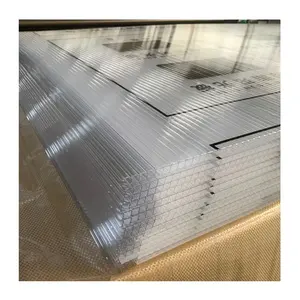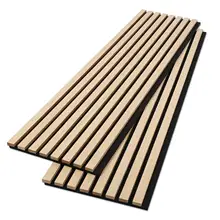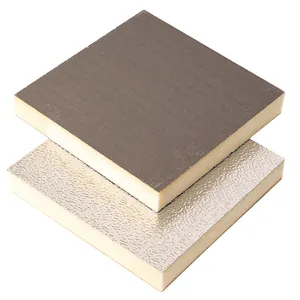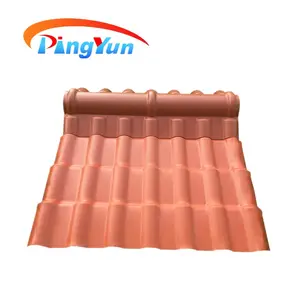Introduction
Roofing plays a pivotal role in home improvement, significantly influencing a house's aesthetics, durability, and energy efficiency. This article delves into the world of plastic roof panels, focusing on polycarbonate, a thermoplastic polymer renowned for its strength and temperature resistance. We will explore the various types of plastic roof panels, their benefits, environmental impact, and provide insights on choosing the right plastic roof panels for your home.
Understanding Plastic Roof Panels
Polycarbonate, a lightweight thermoplastic polymer with high optical clarity, is a popular choice for roofing due to its strength and temperature resistance. Polycarbonate roof panels are versatile, used in a range of applications including industrial roof lights, greenhouses, and conservatories. They offer design flexibility, with different types of panels such as solid, textured, multiwall, and corrugated available to meet diverse requirements.
Types of Plastic Roof Panels
Plastic roofing sheets come in four types, each with unique aesthetic and functional properties. Corrugated plastic roofing sheets are ideal for structures requiring cover or protection. Flat polycarbonate roofing sheets are perfect for industrial complexes and commercial buildings due to their durability and low maintenance. PVC sheets, lightweight and easy to install, are excellent for structures requiring high sunlight transmittance. Lastly, acrylic roofing sheets, made from recycled plastic materials, offer optimal natural light transmittance and can be customized to fit various structural angles.
Benefits of Using Plastic Roof Panels
Polycarbonate plastic roof panels offer numerous benefits. They are shatter-resistant, lightweight, and block UV rays, making them ideal for various structures. These panels are also temperature and impact resistant, able to withstand extreme weather conditions. Furthermore, they are long-lasting, not discoloring, cracking, or weakening even with constant sun exposure. They are particularly beneficial for sunrooms and greenhouses, providing high light transmission, thermal insulation, and impact resistance.
Durability and Longevity
Polycarbonate roofing sheets are durable and long-lasting. Their lifespan depends on the amount of sunlight they receive, with most rated for 10-20 years, and can last up to 30 years if installed in a shaded area. These panels are highly resistant to impact, moisture, and sunlight, and they don't fade or become brittle in the sun. They offer all-weather protection, featuring remarkable heat resistance to protect against fading and discolouring. However, they can accumulate abrasions over time, making the surface appear old and dull.
Energy Efficiency
Plastic roof panels offer excellent insulation properties. Their multi-layered construction provides superior thermal insulation, keeping the interiors of the house cool during hot summers and warm during cold winters. This not only enhances the overall comfort of the living space but also reduces the reliance on artificial heating and cooling systems, leading to significant energy savings and a smaller carbon footprint.
Cost-Effectiveness
Plastic roofing is a cost-effective choice for homeowners. It is less expensive than traditional slate roofing, offering significant savings. Additionally, its energy efficiency contributes to lower utility bills, providing long-term cost benefits. Furthermore, the durability of plastic roofing reduces the need for frequent replacements or repairs, adding to its cost-effectiveness.
Ease of Installation and Maintenance
Polycarbonate, a type of plastic, is a popular choice for roofing due to its strength, light weight, and flexibility. The key to maximizing its benefits lies in correct installation and maintenance. Installation requires a range of tools and materials, and the process varies slightly depending on the type of sheet. It's best to install on a mild day as the sheets may contract or expand in different weather conditions. Post-installation, regular cleaning with warm soapy water and a soft cloth helps maintain the roof's clarity and aesthetics. Avoid abrasive cleaning tools or chemicals to prevent damage.
Environmental Impact of Plastic Roof Panels
Plastic roof panels significantly contribute to environmental sustainability. Crafted from recycled plastics, they divert waste from landfills and reduce the demand for virgin materials. The manufacturing process of these panels consumes fewer resources and emits fewer greenhouse gases, contributing to a lower carbon footprint. Their lightweight nature reduces transportation energy during installation, further minimizing their environmental impact. Additionally, their long lifespan reduces the need for frequent replacements, conserving resources. When replacement is necessary, the panels can be recycled again, continuing the cycle of sustainability.
Recyclability and Sustainability
One of the most significant advantages of plastic roof panels is their contribution to sustainability. These panels are crafted from recycled plastics, diverting plastic waste from landfills and reducing the demand for virgin materials. The production of plastic roof panels also requires less energy compared to traditional roofing materials. Furthermore, when it does come time for replacement, the plastic roof panels can be recycled once again, continuing the cycle of sustainability.
How to Choose the Right Plastic Roof Panels for Your Home
Choosing the right plastic roof panels for your home involves considering factors such as durability, cost-effectiveness, and ease of installation. Polycarbonate roofing panels are a popular choice due to their strength, affordability, and lightweight nature. They come in various types, including solid, plugging solid, multiwall, plugging hollow, and corrugated, each with its unique advantages. When selecting, consider the insulation level you need and your budget. For instance, multi-wall sheets offer greater insulation but cost more than corrugated sheets. Also, ensure to measure your roof size accurately for a perfect fit.
Considerations for Installation
Installing plastic roof panels is a straightforward process that can be done by anyone with basic DIY skills. The tools required for cutting include an angle grinder, circular saw, nibbler, or tin snips. It's important to wear appropriate safety gear such as hearing and eye protection. After cutting, paint or prime the cut edges to prevent rust. Remember, the choice of tool depends on the specific type of plastic and the thickness of the panel. The ease of installation makes plastic roof panels a cost-effective choice for homeowners.
Conclusion
In conclusion, plastic roof panels, particularly those made from polycarbonate, offer a plethora of benefits. They are durable, energy-efficient, cost-effective, and easy to install and maintain. Moreover, they contribute significantly to environmental sustainability, being made from recycled plastics and having a lower carbon footprint compared to traditional roofing materials. When choosing the right plastic roof panels for your home, consider factors such as durability, cost-effectiveness, and ease of installation. With the right choice and proper installation, plastic roof panels can revolutionize your home, enhancing its aesthetics, comfort, and sustainability.










































 浙公网安备 33010002000092号
浙公网安备 33010002000092号 浙B2-20120091-4
浙B2-20120091-4